Dec. 9 update on COVID-19 in MN: 82 more deaths; cases, hospitalizations ebb

Go Deeper.
Create an account or log in to save stories.
Like this?
Thanks for liking this story! We have added it to a list of your favorite stories.
Updated: 2:37 p.m.
A sad December for COVID-19 deaths continues.
The Minnesota Health Department reported 82 more deaths on Wednesday, one of the highest single-day counts in the pandemic. More than 500 deaths have been reported in the first nine days of December, atop more than 1,100 deaths recorded in November.

Other closely watched metrics are showing some improvement. New cases continued to trend lower. Officials posted 4,539 newly confirmed or probable cases of the disease, significantly lower than daily counts over the past few weeks.
New hospital admissions continue to retreat from last week’s record. Still, hospitalizations remain high — more than 1,500 people remain in the hospital with COVID-19, with more than 350 needing intensive care.
Turn Up Your Support
MPR News helps you turn down the noise and build shared understanding. Turn up your support for this public resource and keep trusted journalism accessible to all.
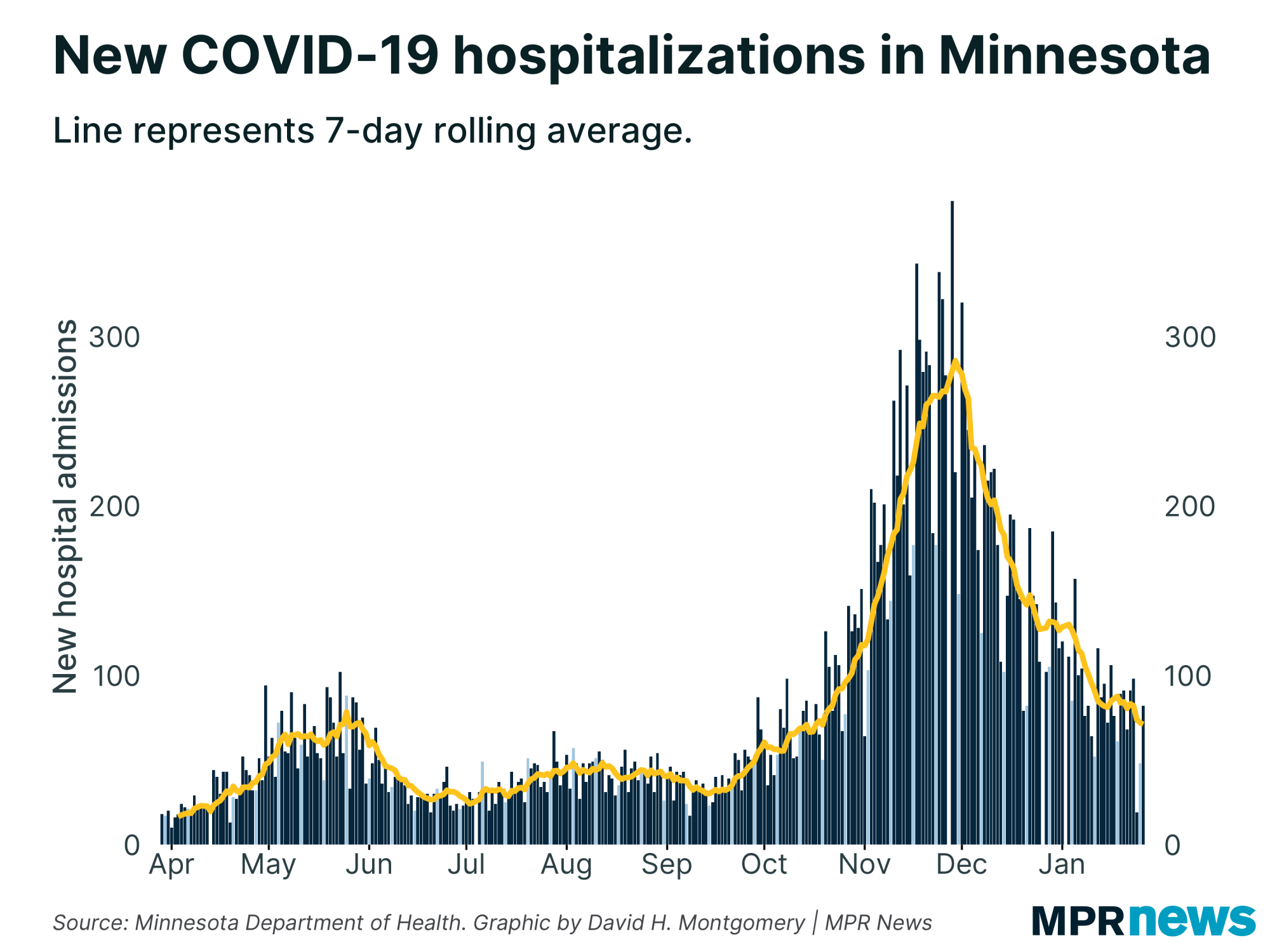
Officials expect another wave of climbing caseloads and hospitalizations soon originating from Thanksgiving holiday celebrations. They’ve cautioned in the past against reading too much into small amounts of data.
Minnesota is likely to hit 400,000 cases “in the next week or so” Health Commissioner Jan Malcolm told reporters Wednesday. The state passed 300,000 cases less than two weeks ago.
Malcolm and Kris Ehresmann, the state’s infectious disease director, both said they were somewhat hopeful that many families heeded the public pleas to not gather in big groups for Thanksgiving, and so the worst-case scenarios of a post-holiday surge might not materialize.
Gov. Tim Walz has urged Minnesotans to hang on, noting that vaccinations here could begin by Christmas. The governor this week is expected to say whether he’ll extend his current ban on in-person bar and restaurant service beyond Dec. 18.
The deaths reported Wednesday raised Minnesota’s count to 4,109. Among those who’ve died, about two-thirds had been living in long-term care or assisted living facilities; most had underlying health problems.
The newest numbers put Minnesota’s total of confirmed or probable cases at 363,719 to date. In about 88 percent of those cases, people have recovered to the point they no longer need to be isolated.
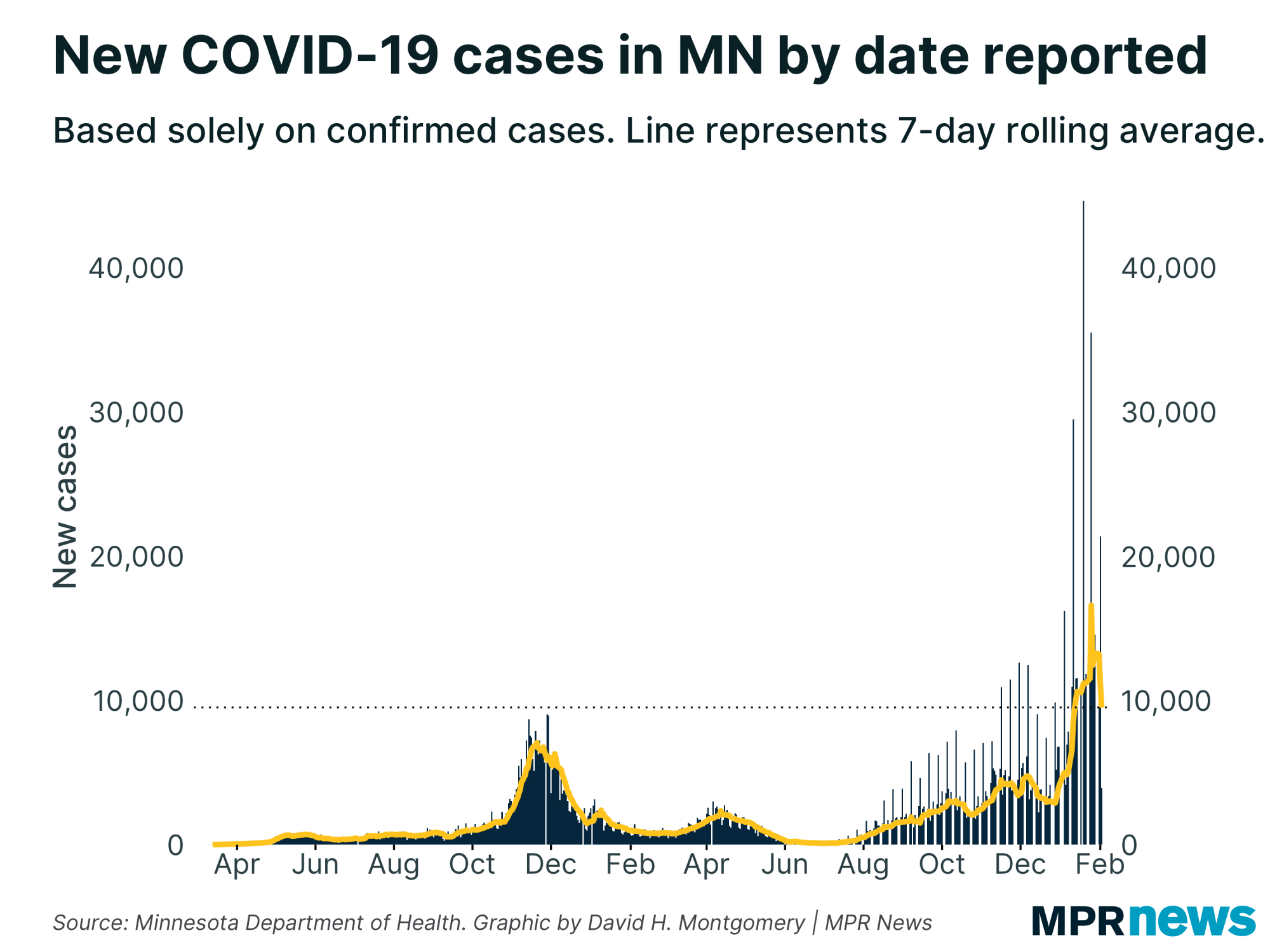
Caseloads spread across age groups
People in their 20s still make up the age bracket with the state’s largest number of confirmed cases — more than 70,000 since the pandemic began, including nearly 38,000 among people ages 20 to 24.
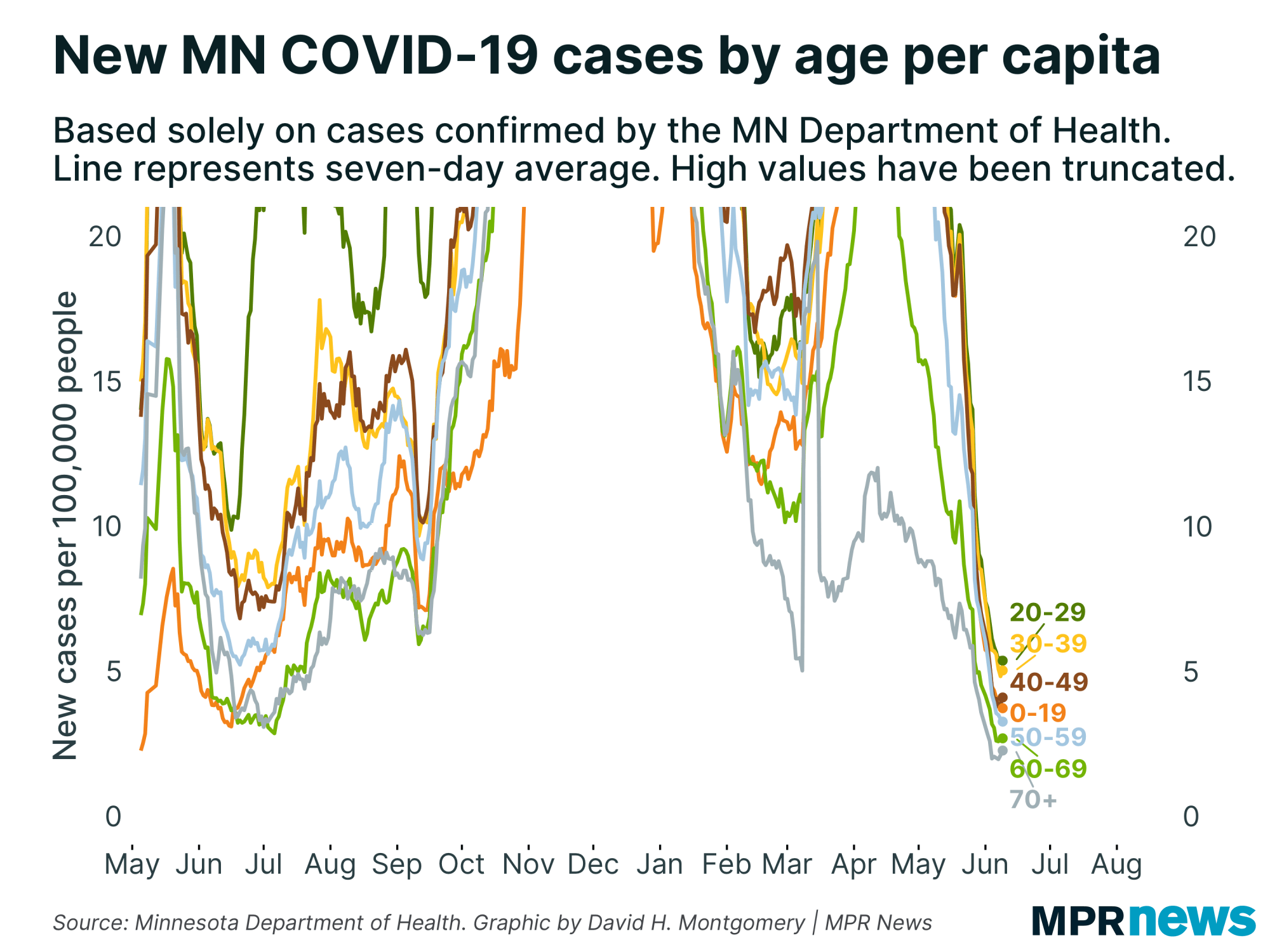
The number of high school-age children confirmed with the disease has also grown, with more than 28,000 total cases among children ages 15 to 19 since the pandemic began.
Although less likely to feel the worst effects of the disease and end up hospitalized, experts worry youth and young adults will spread it to grandparents and other vulnerable populations.
It’s especially concerning because people can have the coronavirus and spread COVID-19 when they don’t have symptoms.
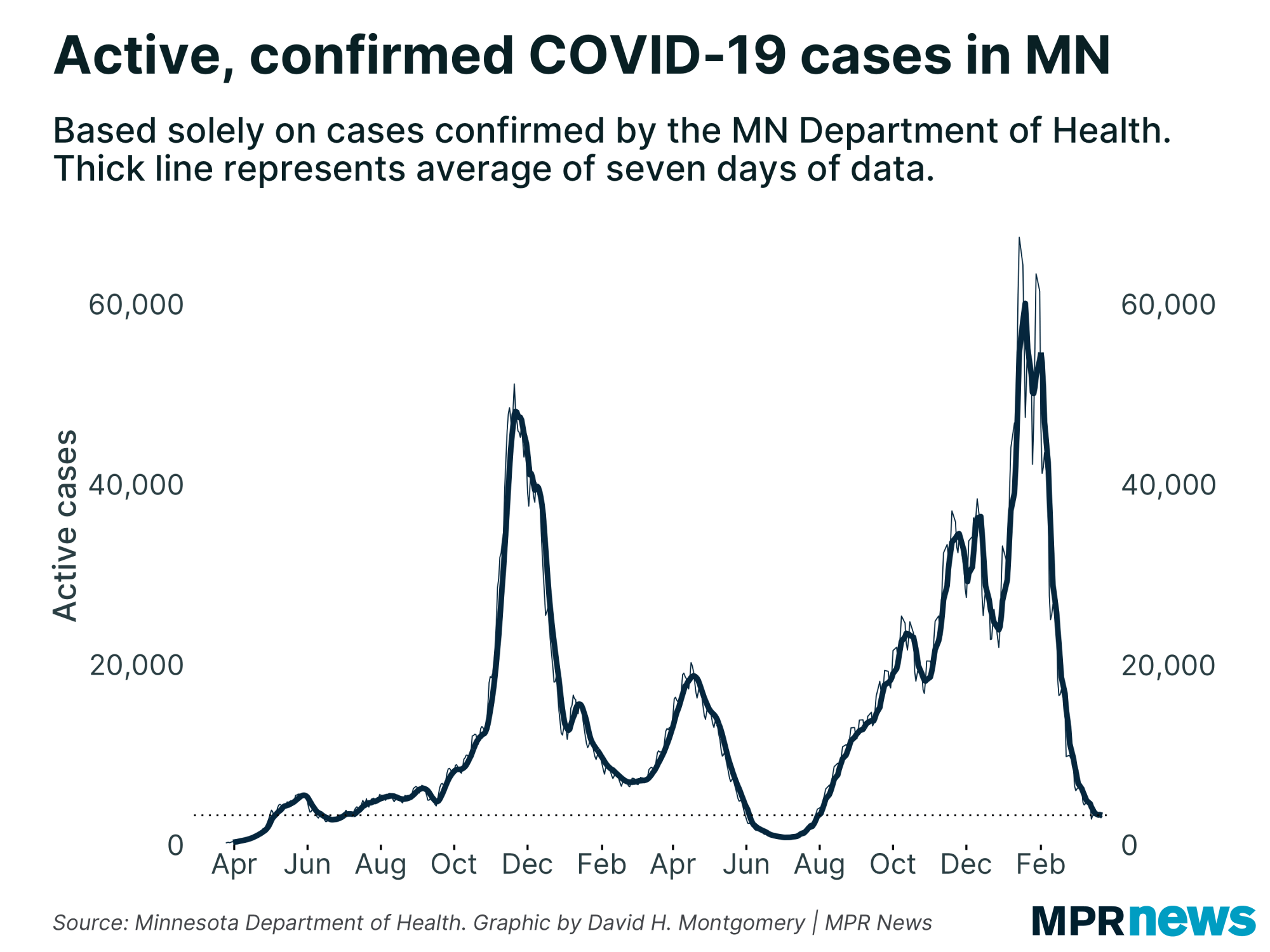
New caseloads ebb in rural Minnesota
Central and northern Minnesota drove much of the increase in new cases over the past five weeks, while Hennepin and Ramsey counties showed some of the slowest case growth in the state.
After a spike in confirmed cases through much of November, all regions of the state have seen new case numbers plateau or start to fall in recent days. Hard-hit northwestern Minnesota may soon have fewer new cases per capita than the metro.
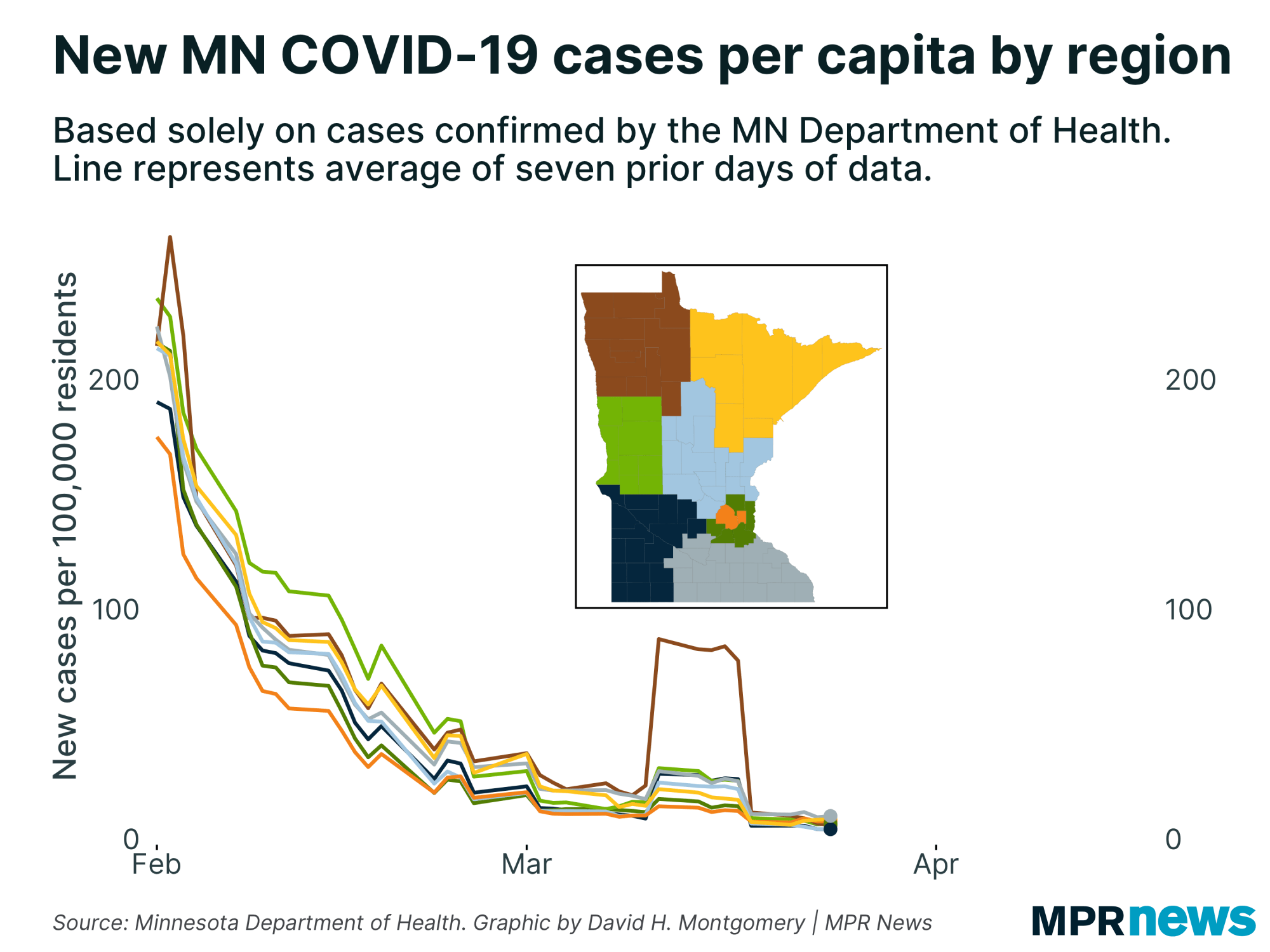
Hot spots continue to pop up in rural counties relative to their population.
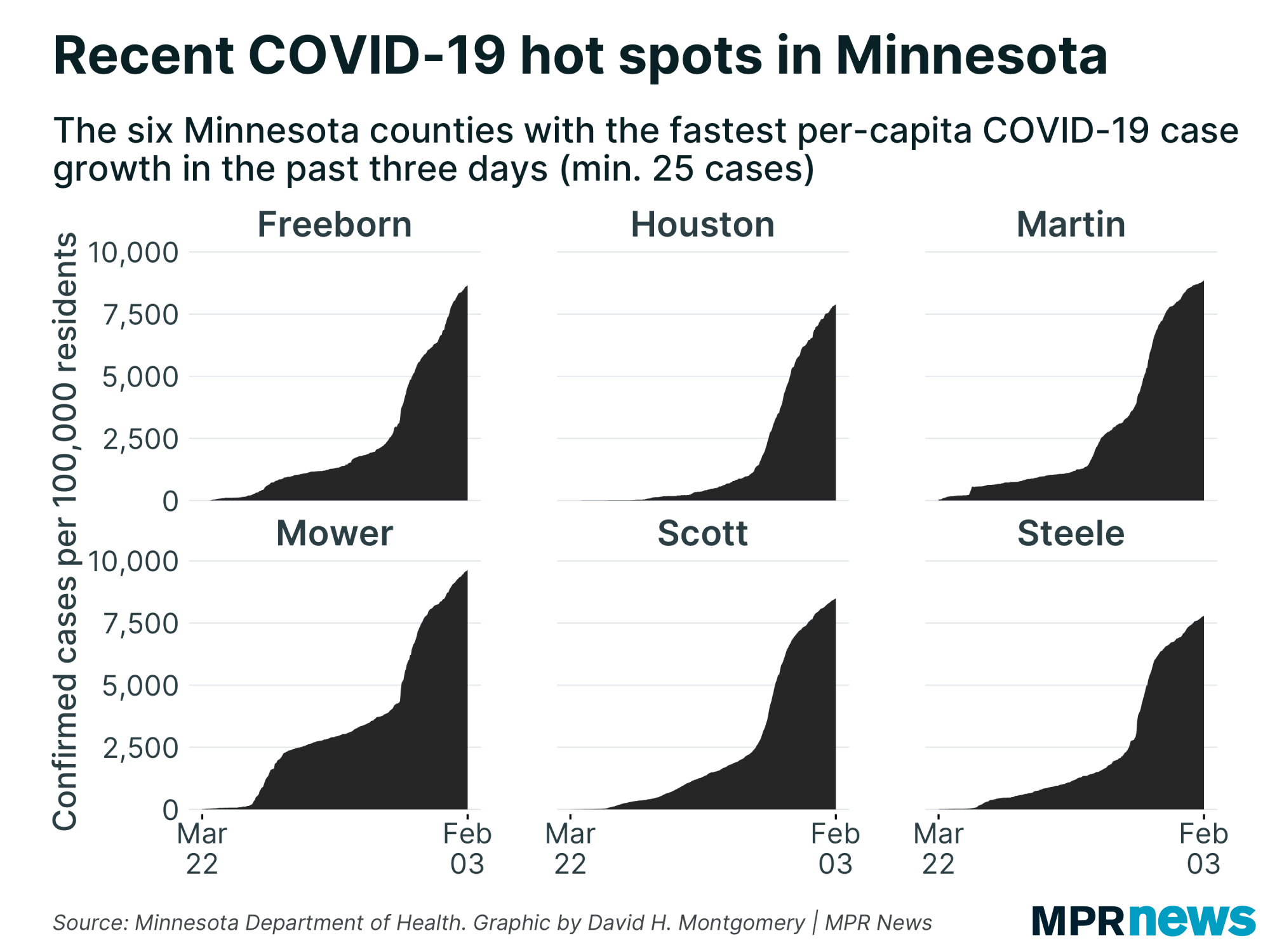
Latino cases climb
In Minnesota and across the country, COVID-19 has hit communities of color disproportionately hard in both cases and deaths. That’s been especially true for Minnesotans of Hispanic descent for much of the pandemic.
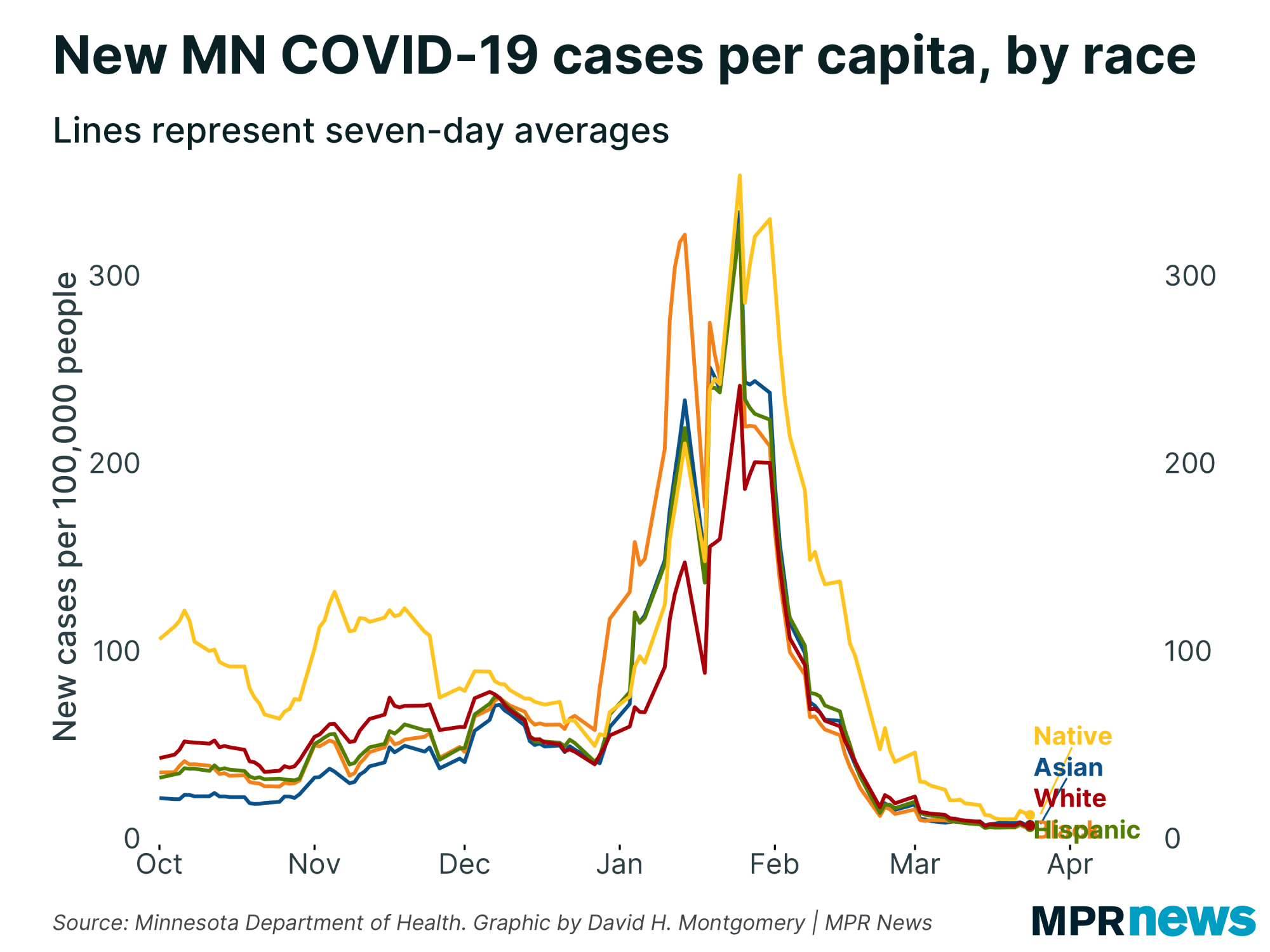
Distrust of the government, together with deeply rooted health and economic disparities, have hampered efforts to boost testing among communities of color, officials say, especially among unauthorized immigrants who fear their personal information may be used to deport them.
Similar trends have been seen among Minnesota’s Indigenous residents. Counts among Indigenous people jumped in October relative to population.
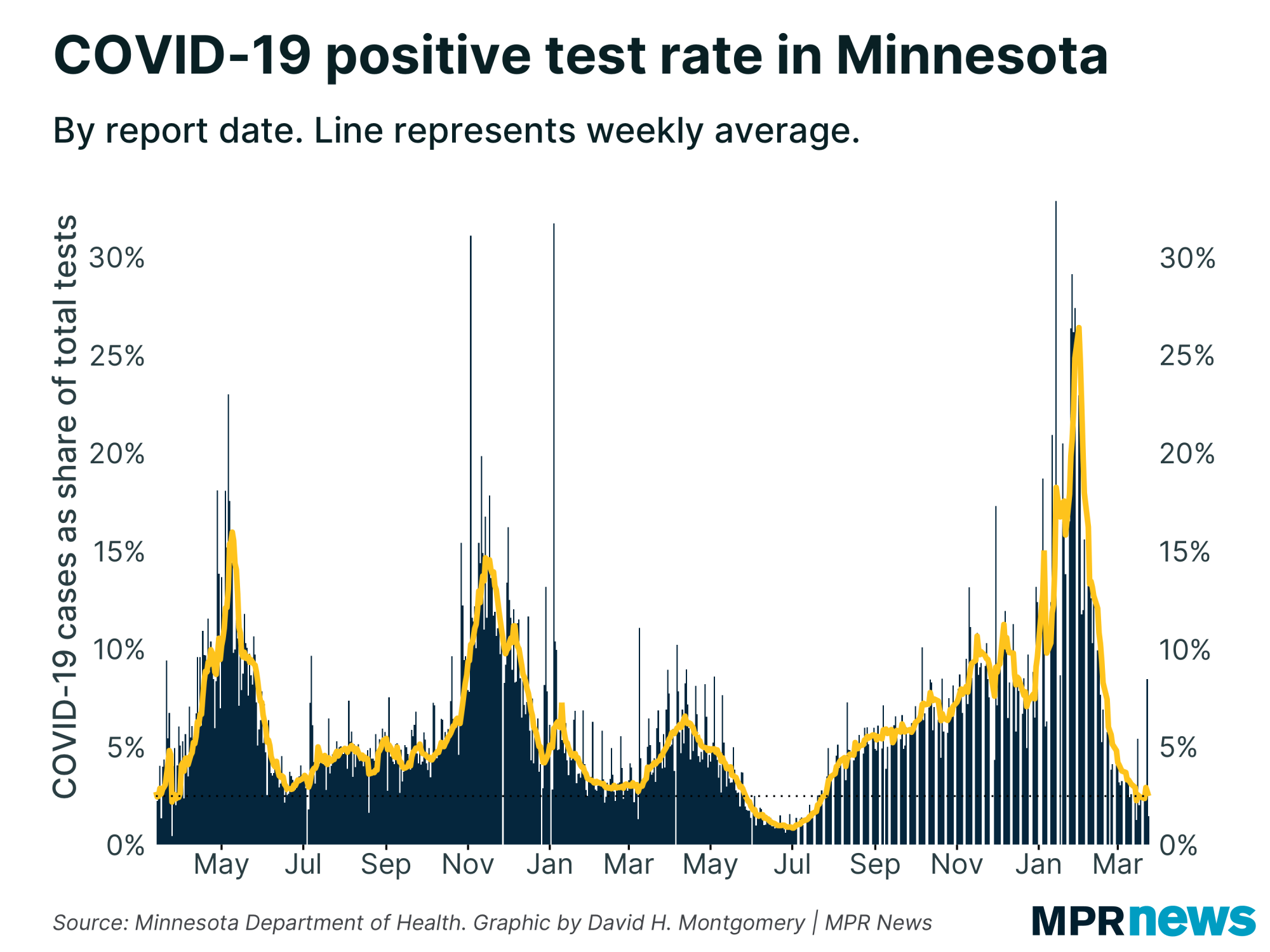
Officials continue to plead with Minnesotans to wear masks in public gathering spaces, socially distance, stay home if they don’t feel well and otherwise stay vigilant against the spread of COVID-19.
Developments around the state
Walz calls Monday session for COVID aid package
Gov. Tim Walz said Wednesday that he is calling lawmakers into special session Monday to take up a package of COVID-19 relief for businesses, workers and families.
The governor did not say whether an agreement on a relief package has been reached with House and Senate leaders. He and lawmakers have talked of a package that would include support to hard-hit bar and restaurant owners and their workers.
The governor also said he also plans to extend his emergency powers to address the pandemic by another 30 days. Lawmakers will likely debate those powers next week as they have since March.
— Tim Pugmire | MPR News
Report: Pandemic takes toll on Minnesota child care providers
A new report finds almost half of Minnesota child care providers are currently losing money amid the pandemic.
The report from the National Association for the Education of Young Children, surveyed child care providers in the middle and end of November.
It found that over half of respondents were using their personal credit cards of savings accounts to purchase needed supplies. Nine in 10 have had to purchase additional cleaning supplies and over half have had to hire additional staff.
Forty-five percent were faced with so much uncertainty that they were unable to say how much longer they will be able to stay open. Of those providers who do know what their futures hold, nearly 1 in 5 say they will have to close within three months if enrollment stays where it is and they don’t receive more public support.
— Elizabeth Shockman | MPR News
Mayo Clinic suspending some southern MN clinic operations amid COVID
Mayo Clinic Health System says it is has temporarily suspended operations at its Belle Plaine, Mankato-Northridge, Le Sueur, Janesville and Waterville clinics.
The reason: the ongoing surge of patients hospitalized with COVID-19.
“Suspensions are necessary to reallocate staff to other critical care needs in response to the COVID-19 surge,” the organization said.
The closures are expected to last six weeks. COVID-19 testing is still taking place at the Belle Plaine Clinic.
— MPR News Staff
Top headlines
What you need to know as Minnesota prepares for a COVID-19 vaccine: Minnesotans could begin to be vaccinated against the coronavirus in a couple of weeks. Health care workers and residents of long-term care facilities will be the first to receive it. Here’s what you need to know about the vaccine and Minnesota’s distribution plan.
Walz details COVID-19 vaccine plan; GOP leaders back it: Minnesota is expected to receive 183,400 doses of COVID-19 vaccines this month, and they’ll be targeted toward health care workers and the state’s most vulnerable residents, Gov. Tim Walz said.
Penalties rare for ignoring COVID-19 precautions: Safety protocols ordered by Gov. Tim Walz allow for noncompliance penalties, but they appear to be rare. Health officials say education is a better approach than punishment to get people to follow COVID-19 safety measures.
As COVID-19 spreads in Minn. prisons, loved ones worry: Prisons have lowered their numbers and taken other measures to stem the virus’s spread. But that hasn’t been enough to stop deadly outbreaks in Minnesota and across the United States — and family members and advocates say state and federal governments haven’t done enough to keep their loved ones safe.
COVID-19 in Minnesota
Data in these graphs are based on the Minnesota Department of Health's cumulative totals released at 11 a.m. daily. You can find more detailed statistics on COVID-19 at the Health Department website.


